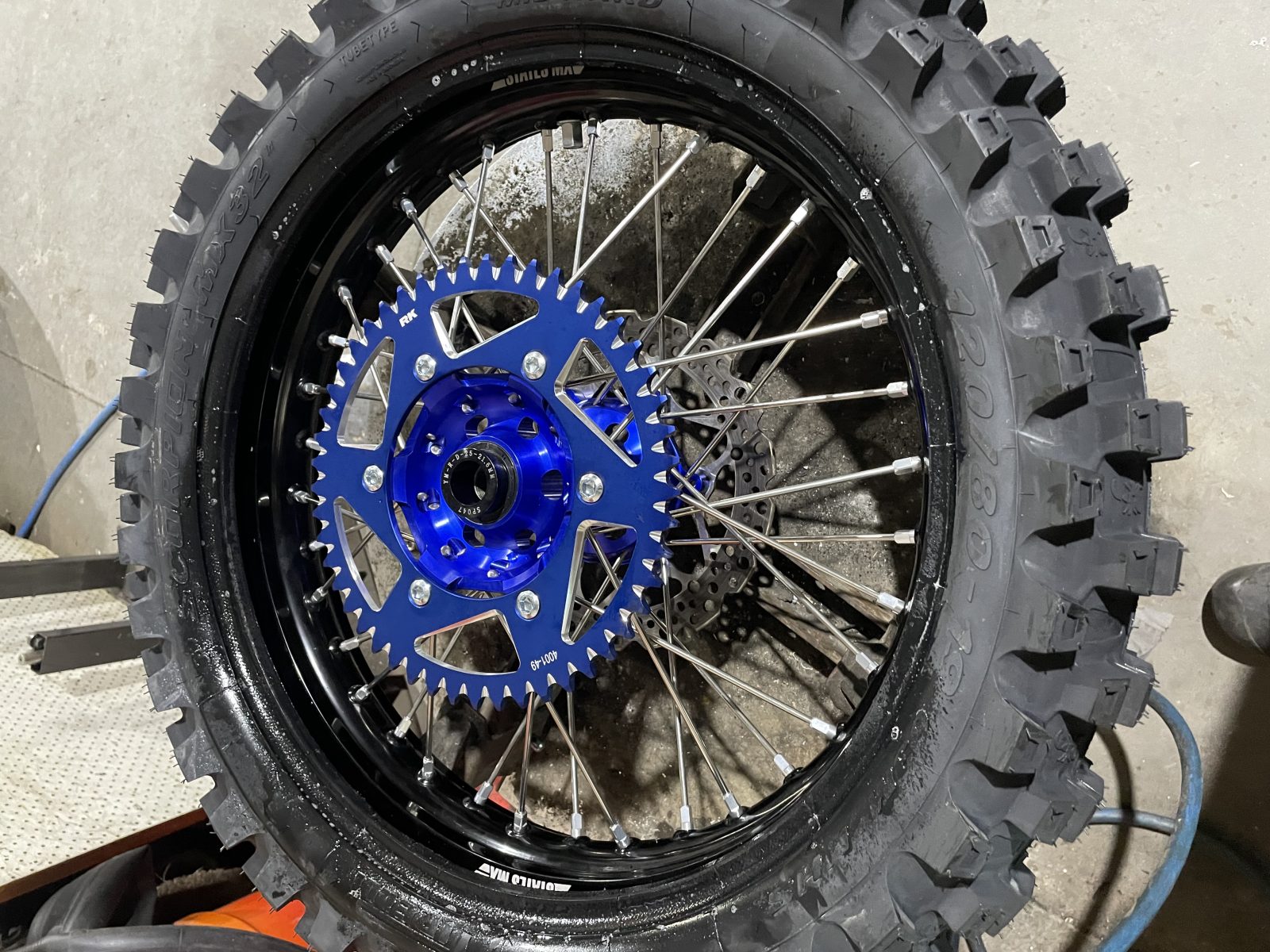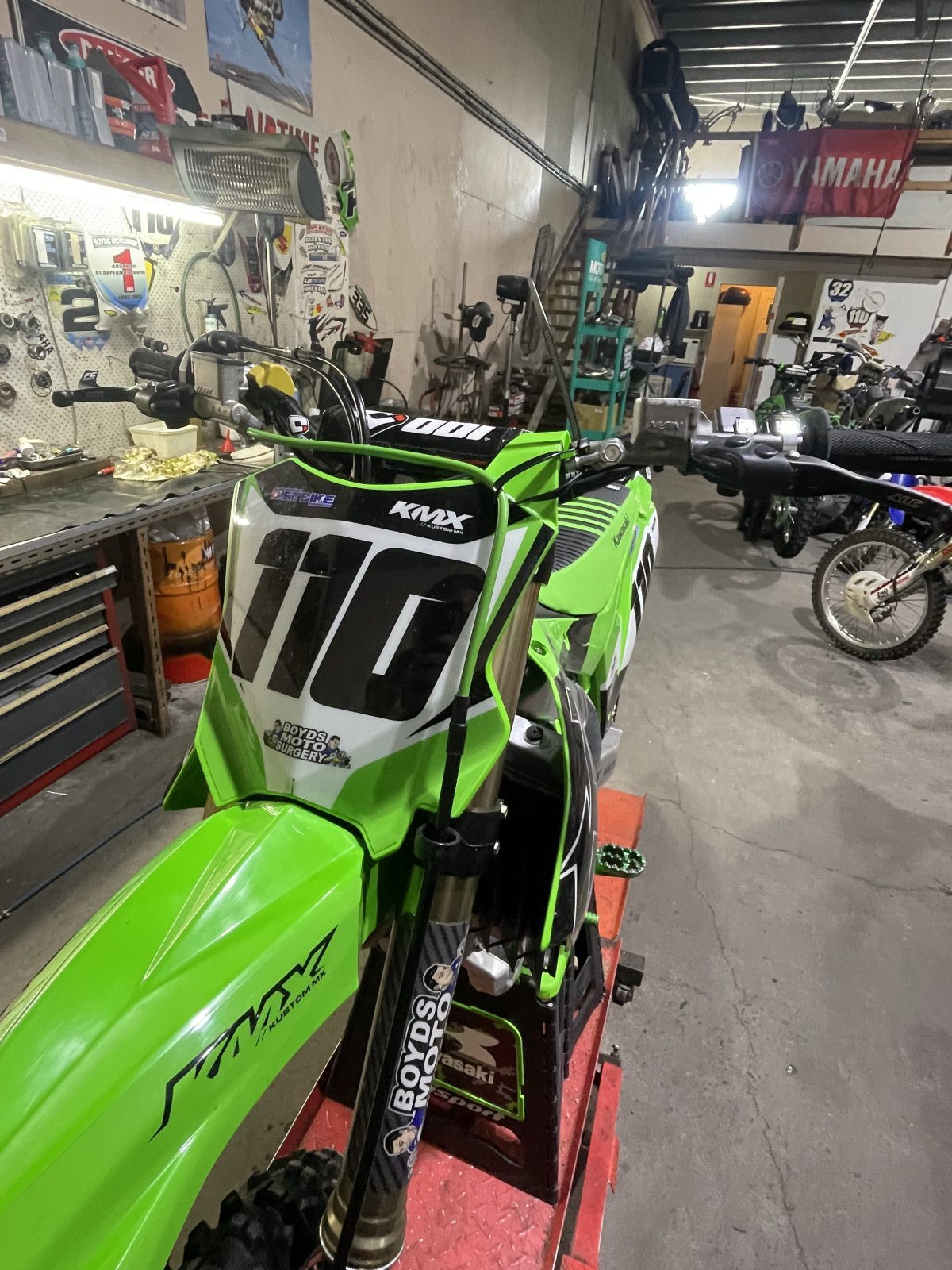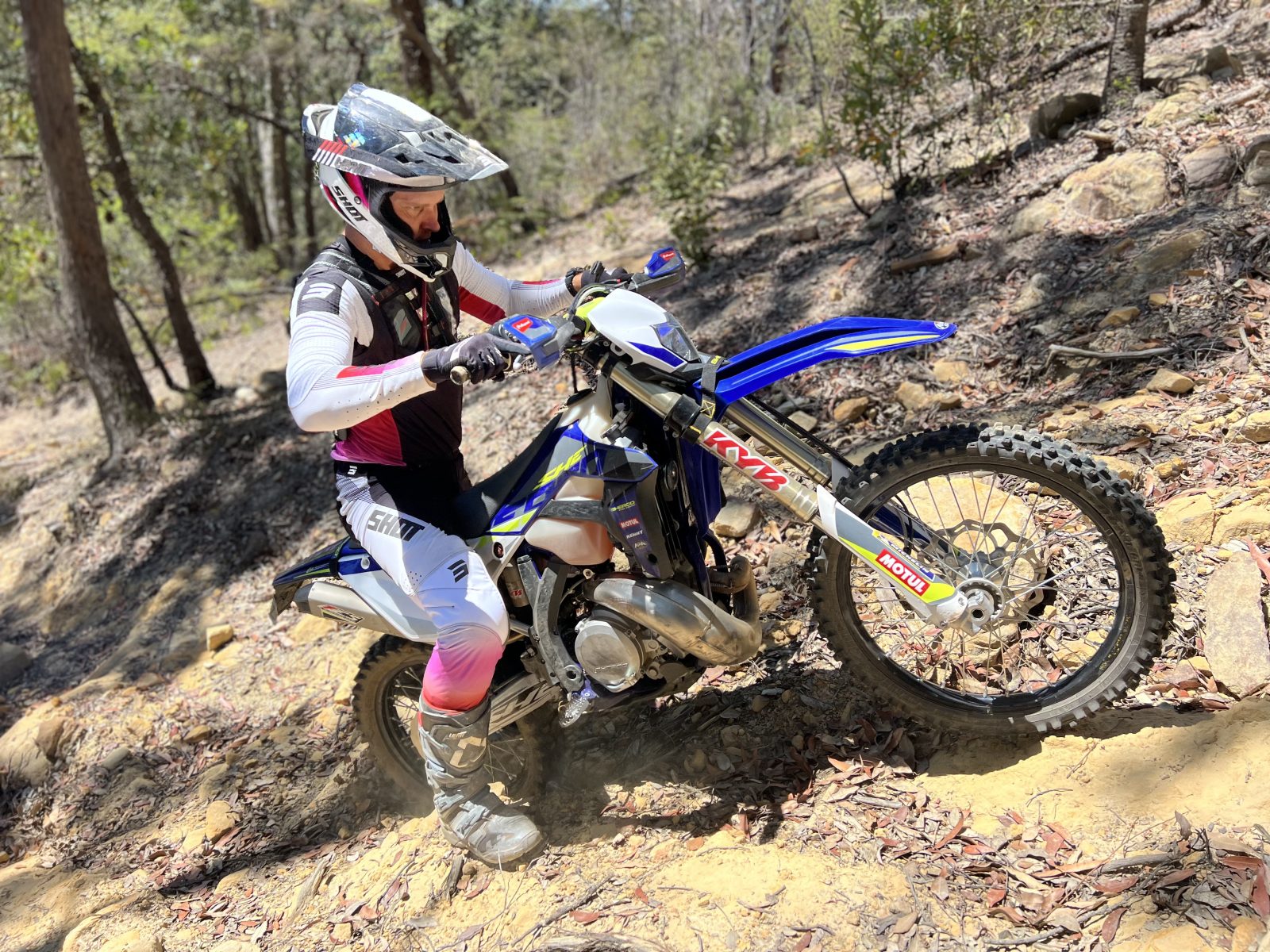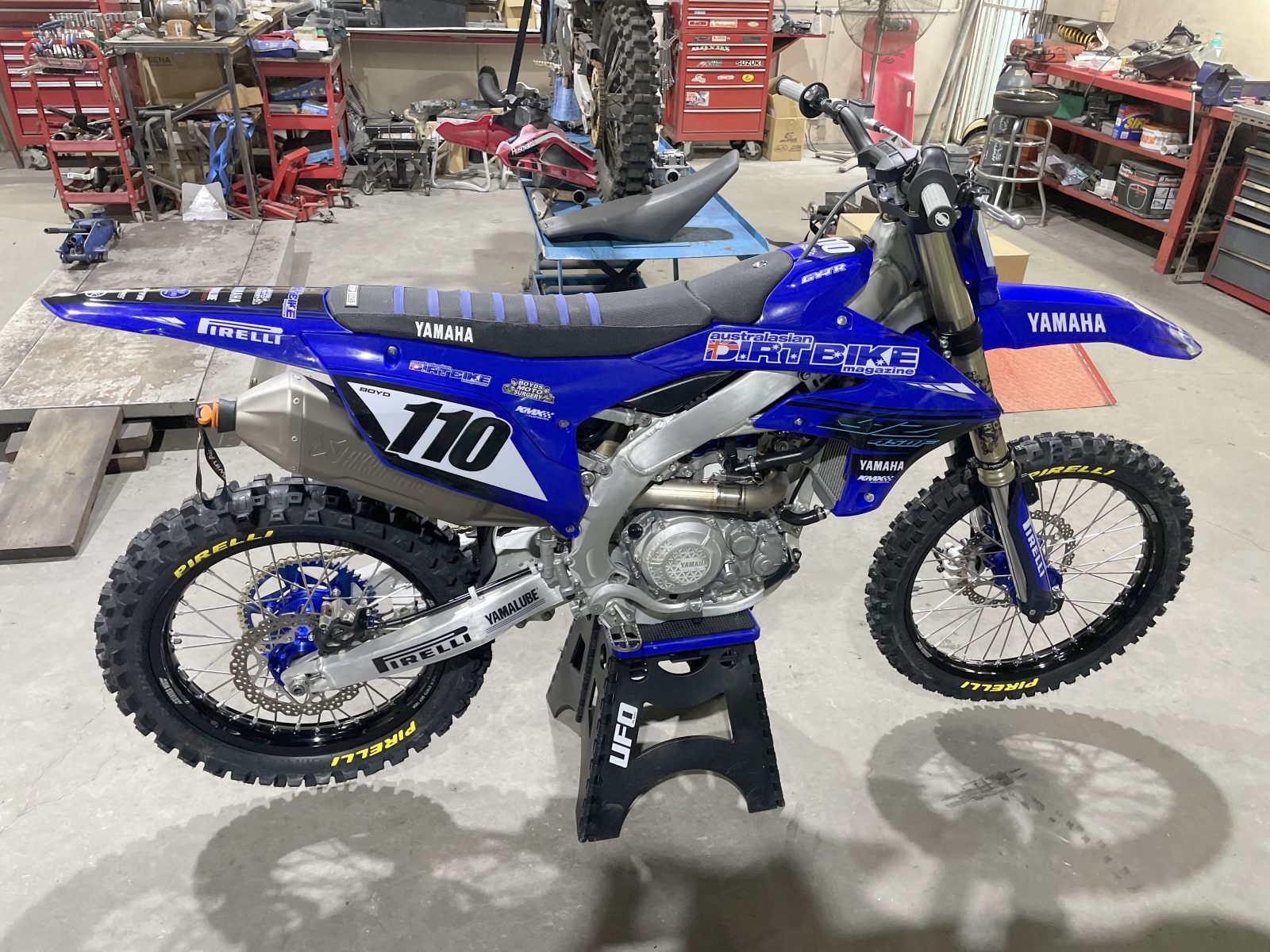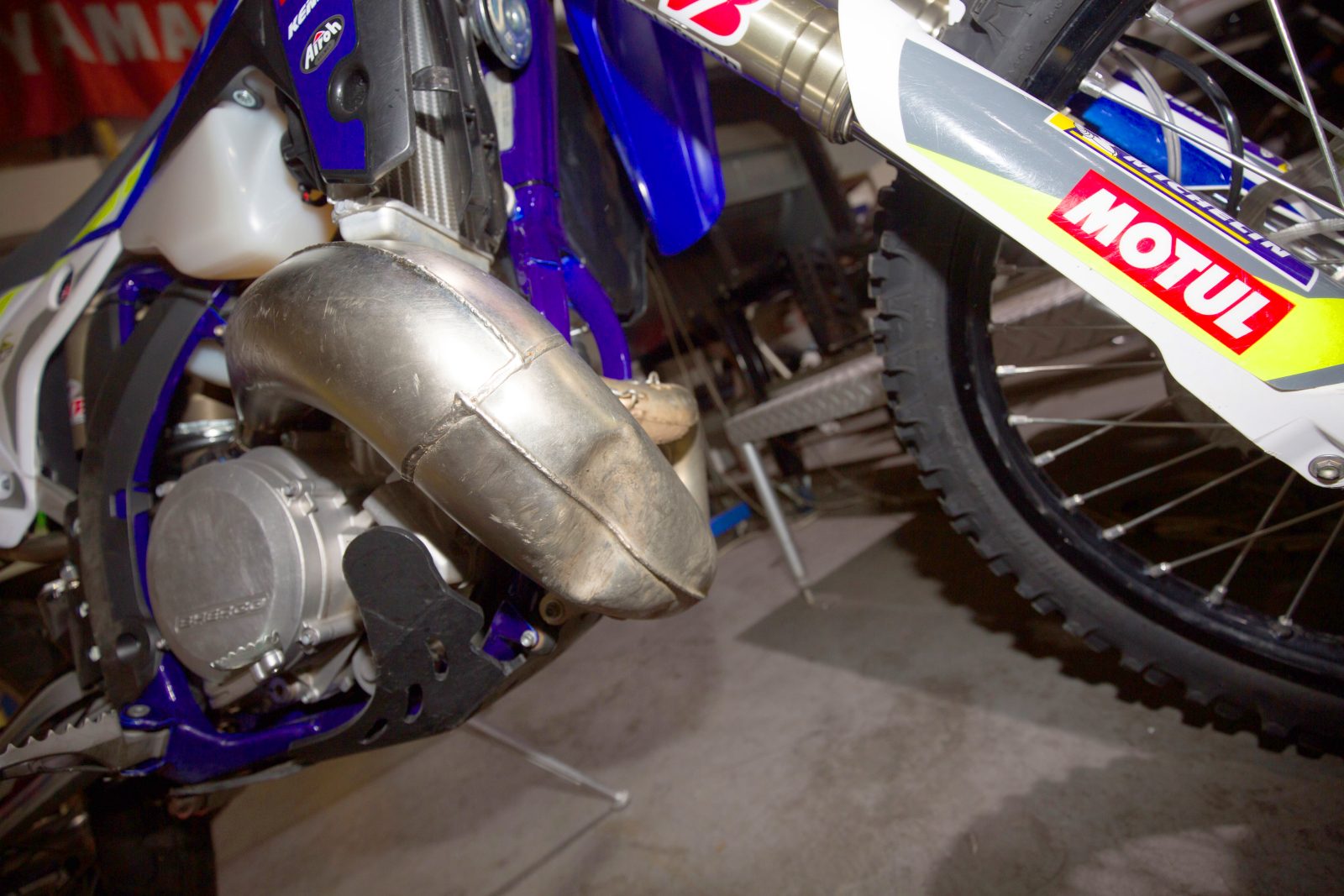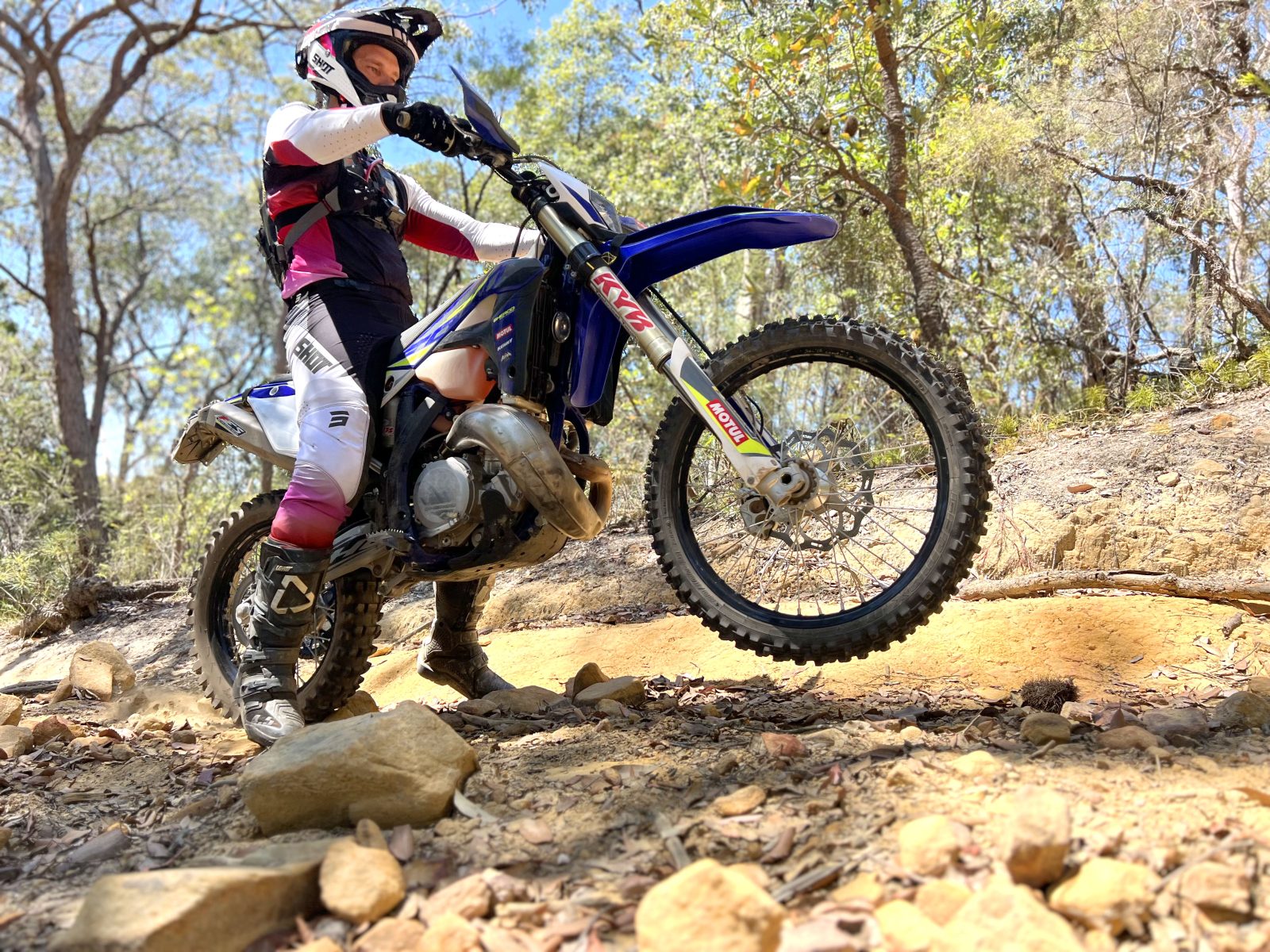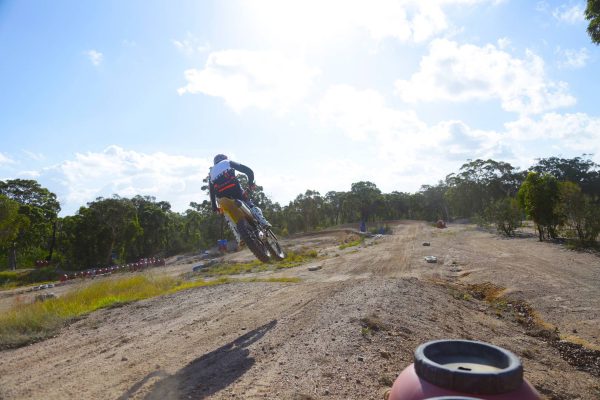
EVERYBODY WANTS TO know how to get more air time but, for some people, ambition and ability can get mixed up, leading to injury. Here we explain the basics of jumping so you dial your skills before going for the big leaps.
1 APPROACH
When you are approaching a jump for the first time, pick a straight run up with the least bumps or obstacles in the way. You can even come from outside of the track to get a straighter run if you have to. Stand in the attack position with your knees bent, butt pushed back, head over the handlebar and elbows up while gripping the bike tightly with your knees.

2 KEEP IT SMOOTH
Carry your momentum all the way up to the jump and off the take-off ramp. Be smooth on the throttle and allow the bike to pivot underneath you as your bike goes up the ramp. Don’t be too aggressive with the throttle on the up-ramp and definitely don’t chop it either. Choose a gear that will carry you all the way up the approach and off the ramp in the meaty part of the torque curve. The last thing you want is to be running out of revs on the take-off.

3 TAKE-OFF
As the bike leaves the take-off ramp let it flatten out in the air and back off the throttle. Keep gripping the bike tightly with your knees but avoid lifting on the handlebar or pushing down on the ’pegs. Let the bike float.

4 MID-AIR
Look for your landing spot. Where you look is where you’ll go. Focus on your landing as you float through the air and be prepared to get on the gas as the wheels touch down. Always be looking ahead.

5 LANDING
You want to land on the angle of the landing ramp. Land with the throttle on, let your legs and the suspension absorb the impact and accelerate down the ramp. If you land back wheel first then the front wheel tends to slap down hard. And if you land with the throttle off then the bike tries to stop while you continue forward over the handlebar.
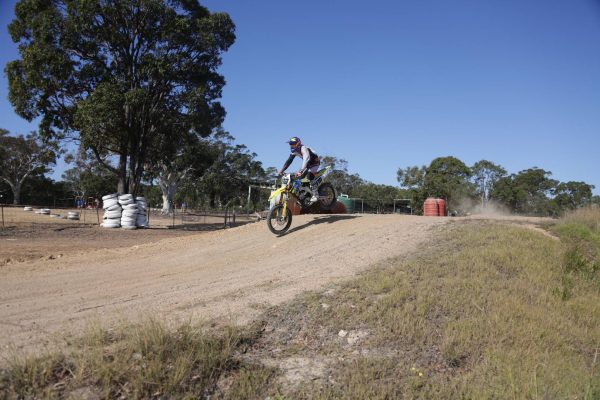
6 THE BUILD UP
When you are approaching a new jump for the first time, take it easy. Don’t just pin it and hope for the best. Build up to it, jump further little by little until you are landing at the base of the down ramp. Once you get to that point and you know your bike has plenty of power to carry you right up and over it then go for it. Just pinning the throttle and hoping nearly always ends in tears.
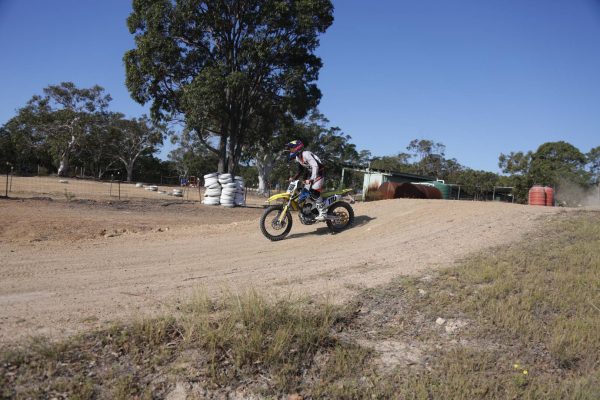
TIPS
NOSE HIGH
If you get yourself in a situation where the front wheel is too high you can pull in the clutch and tap the rear brake. This sudden stop to rear wheel rotation causes the front to drop down. But don’t forget to pull the clutch in or the engine will stall and it will be like landing with the rear brake on.
NOSE DOWN
This is one of those moments that causes your sphincter to tighten rapidly. If you get into this situation, hit the throttle hard. The resulting increase in back wheel and crankshaft rotation will cause the front to lift and the bike to level out.
CASING OUT
This is a worst-case scenario but if you’re learning to hit jumps for the first time then a case-out will happen someday. When you’re expecting this to happen, shift you weight back and brace for the impact but do not lock your arms or legs. Keep them bent but strong so you can absorb the impact. Rev the bike hard and try to come down back wheel first. As the back wheel comes down, the bike will start to drive out of the hard landing, absorbing most of the impact. Always avoid bailing out if possible. Landing on the bike and having the suspension take most of the impact is better than taking the full force to your ankles. Next time around go faster.
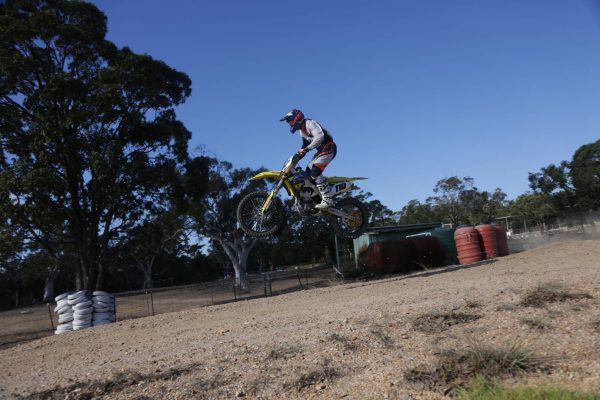
WHO’S IT FOR
Skill Set: Beginner to Intermediate
Genre: Motocross skills
Practice: Each time you go riding and every time you approach a new jump for the first time.
Strength and Height: All riders big small or tall.
Widow Potential: If you get it all wrong then there is potential for a hospital trip or worse. Know your limits and ride within them.
Bragging Rights: Hitting a big jump or clearing a large gap is the ultimate bragging rights. The only thing that can trump it is whipping the bike sideways over the same jump.
Tech Ed Mat Boyd
Article from ADB #471




